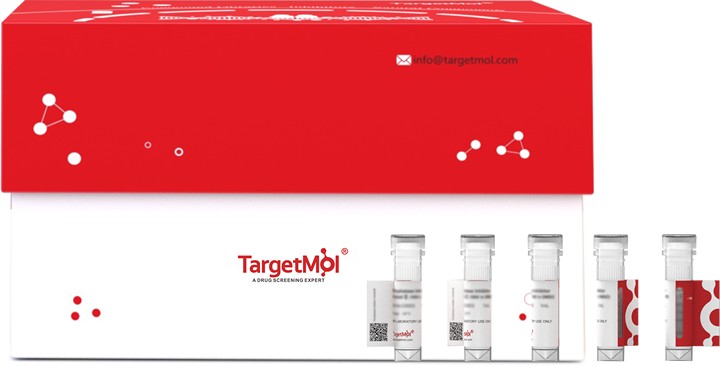- 全部删除
 您的购物车当前为空
您的购物车当前为空
CDK5 Protein, Human, Recombinant (GST)
Cell division protein kinase 5, also known as Cyclin-dependent kinase 5, Serine/threonine-protein kinase PSSALRE, Tau protein kinase II catalytic subunit, TPKII catalytic subunit and CDK5, is a cytoplasm protein which belongs to theprotein kinase superfamily, CMGC Ser/Thr protein kinase family and CDC2 / CDKX subfamily. Cyclin-dependent kinases (Cdks) are a family of proline-directed Ser/Thr kinases known for their role in the control of cell cycle progression. In 1992, this family was joined by CDK5, which is an atypical member in that it uses its own activators and is multifunctional, playing important regulatory roles in multiple cellular functions. CDK5, unlike other Cdks, is not regulated by cyclins, and its activity is primarily detected in postmitotic neurons in developing and adult nervous systems. CDK5 is activated by association with a neuron-specific activator, p35 or its isoform p39. CDK5 is probably involved in the control of the cell cycle. It interacts with D1 and D3-type G1 cyclins. CDK5 can phosphorylate histone H1, tau, MAP2 and NF-H and NF-M. It also interacts with p35 which activates the kinase. CDK5 plays important roles in various neuronal activities, including neuronal migration, synaptic activity, and neuronal cell death.

CDK5 Protein, Human, Recombinant (GST)
| 规格 | 价格 | 库存 | 数量 |
|---|---|---|---|
| 50 μg | ¥ 1,890 | 5日内发货 |
产品信息
| 生物活性 | No Kinase Activity |
| 产品描述 | Cell division protein kinase 5, also known as Cyclin-dependent kinase 5, Serine/threonine-protein kinase PSSALRE, Tau protein kinase II catalytic subunit, TPKII catalytic subunit and CDK5, is a cytoplasm protein which belongs to theprotein kinase superfamily, CMGC Ser/Thr protein kinase family and CDC2 / CDKX subfamily. Cyclin-dependent kinases (Cdks) are a family of proline-directed Ser/Thr kinases known for their role in the control of cell cycle progression. In 1992, this family was joined by CDK5, which is an atypical member in that it uses its own activators and is multifunctional, playing important regulatory roles in multiple cellular functions. CDK5, unlike other Cdks, is not regulated by cyclins, and its activity is primarily detected in postmitotic neurons in developing and adult nervous systems. CDK5 is activated by association with a neuron-specific activator, p35 or its isoform p39. CDK5 is probably involved in the control of the cell cycle. It interacts with D1 and D3-type G1 cyclins. CDK5 can phosphorylate histone H1, tau, MAP2 and NF-H and NF-M. It also interacts with p35 which activates the kinase. CDK5 plays important roles in various neuronal activities, including neuronal migration, synaptic activity, and neuronal cell death. |
| 种属 | Human |
| 表达系统 | Baculovirus Insect Cells |
| 标签 | N-GST |
| 蛋白编号 | Q00535-1 |
| 别名 | PSSALRE,cyclin-dependent kinase 5 |
| 蛋白构建 | A DNA sequence encoding the human CDK5 isoform 1 (NP_004926.1) (Met 1-Pro 292) was fused with the GST tag at the N-terminus. Predicted N terminal: Met |
| 蛋白纯度 | > 94 % as determined by SDS-PAGE |
| 分子量 | 59.6 kDa (predicted); 59.6 kDa (reducing conditions) |
| 内毒素 | < 1.0 EU/μg of the protein as determined by the LAL method. |
| 缓冲液 | Lyophilized from a solution filtered through a 0.22 μm filter, containing PBS, 0.5 mM GSH, pH 7.0.Typically, a mixture containing 5% to 8% trehalose, mannitol, and 0.01% Tween 80 is incorporated as a protective agent before lyophilization. |
| 复溶方法 | A Certificate of Analysis (CoA) containing reconstitution instructions is included with the products. Please refer to the CoA for detailed information. |
| 存储 | It is recommended to store recombinant proteins at -20°C to -80°C for future use. Lyophilized powders can be stably stored for over 12 months, while liquid products can be stored for 6-12 months at -80°C. For reconstituted protein solutions, the solution can be stored at -20°C to -80°C for at least 3 months. Please avoid multiple freeze-thaw cycles and store products in aliquots. |
| 运输方式 | In general, Lyophilized powders are shipping with blue ice. |
| 研究背景 | Cell division protein kinase 5, also known as Cyclin-dependent kinase 5, Serine/threonine-protein kinase PSSALRE, Tau protein kinase II catalytic subunit, TPKII catalytic subunit and CDK5, is a cytoplasm protein which belongs to theprotein kinase superfamily, CMGC Ser/Thr protein kinase family and CDC2 / CDKX subfamily. Cyclin-dependent kinases (Cdks) are a family of proline-directed Ser/Thr kinases known for their role in the control of cell cycle progression. In 1992, this family was joined by CDK5, which is an atypical member in that it uses its own activators and is multifunctional, playing important regulatory roles in multiple cellular functions. CDK5, unlike other Cdks, is not regulated by cyclins, and its activity is primarily detected in postmitotic neurons in developing and adult nervous systems. CDK5 is activated by association with a neuron-specific activator, p35 or its isoform p39. CDK5 is probably involved in the control of the cell cycle. It interacts with D1 and D3-type G1 cyclins. CDK5 can phosphorylate histone H1, tau, MAP2 and NF-H and NF-M. It also interacts with p35 which activates the kinase. CDK5 plays important roles in various neuronal activities, including neuronal migration, synaptic activity, and neuronal cell death. |




